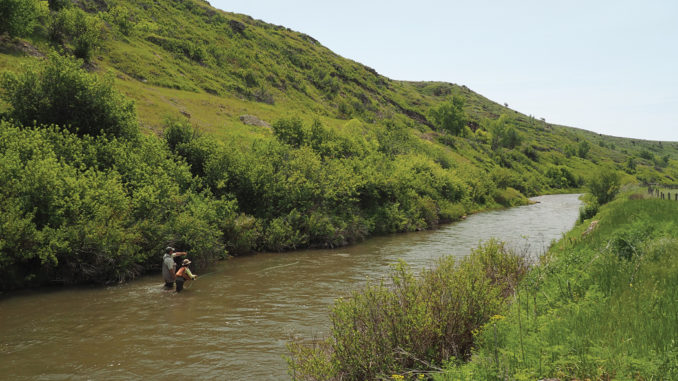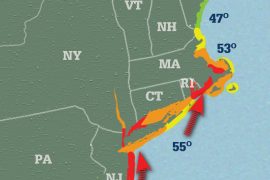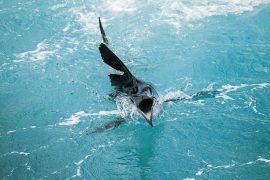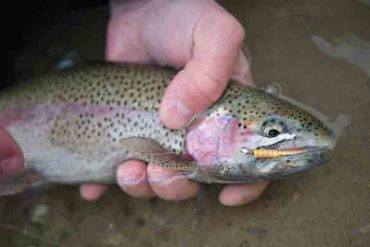
he first time catching trout in high water, especially if it’s off-color, is finding the fish. It’s an old rule: If you fish where trout are not, you’re not very likely to catch them. It’s possible that the most important skill in all of trout fishing at any time of year is learning to read the water. The value of that skill is magnified when the water is up and opaque.
Last spring Jason Newmack, guiding out of The Lodge at Eagle Rock on Montana’s Missouri River, took my wife, Masako, and me off the main river for a day to fish for brown trout in a favorite tributary stream that has its sources on the slopes of the Big Belt Mountains but flows for most of its course through lands that I’ll call gently rolling buffalo hills. The buffalo were missing, but the trout were there.

Snowmelt, conspiring with an unlucky rain a day or two earlier, caused the creek to be high and what generously could be called cloudy. Masako and I stood on a bridge, looked down at the water and expressed our lack of enthusiasm about fishing it.
“The trout are still in there,” Jason said. “We’ll just need to find them.”
The first thing he taught us: When the water is pushy, trout move out of central flows and look for soft spots where they can hold without fighting strong currents. More often than not, those areas of easier living are located at or near the edges of a stream.
Bank lies are usually easy to read in high water, once you get accustomed to the idea that trout will move into lies that would put them at risk of predation in normal flows. The same silted water that makes them more difficult to locate for the angler makes them almost impossible for predators to spot. Trout that normally hang out in the safer central depths become comfortable in clouded water that is just two to three feet deep, especially if it’s slower and less brutal than the water around it.
Protruding boulders, indentations in the bank and eddies are all obvious edge areas where the current is broken and trout can hold at their ease. Any boil breaking up to the surface, whether right at the bank or 10 to 15 feet from it, speaks of a boulder interrupting the current along the bottom. Sometimes you’ll find a riffle corner—a small shelf that deflects the current outward—where at normal flows there might not be any water. Aquatic insects and crustaceans migrate onto that shelf. Trout move into the peaceful water just downstream from the shelf to intercept any unfortunates that become dislodged by the current.
Trout are highly motivated to feed in spring. They’ve struggled through the paucity of winter. The water, even if it’s high and less than pretty, is warming up, prodding aquatics into activity. Salmonflies and golden stones, those big and early season insects, migrate to shore as nymphs for the process of crawling out to emerge as adults. These migrations are another reason you’ll find trout taking up lies along the edges in spring. Big stonefly hatches often happen when the water is still high. Trout see a combination of abundant nymphs crawling awkwardly along the bottom and gathering at the shoreline, then they see increasing numbers of adults falling from overhanging vegetation, fluttering anxiously along on surface currents.
We always think first…





